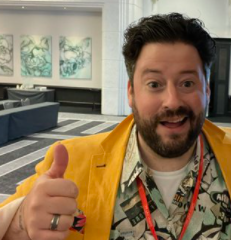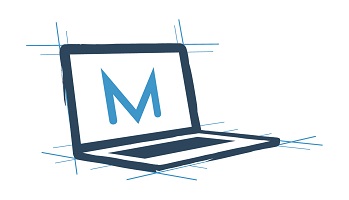Empower End Users by Understanding Their Needs
This is the second post in a series on the principles behind the Modern Workplace
The first can be found here: It’s not you, It’s me
“Change for the sake of change is frivolous. It must be avoided. I know what users want because I’ve been doing this for so long, I know what works!” For a guy who has loudly told the world that he has never read Harry Potter, my (former) coworker sure did an amazing Dolores Umbridge impersonation.
We are caught in a cultural tug-of-war in our technology departments. On one side we have legacy SysAdmins who believe that IT knows what’s best for our users. The other end is anchored by the Modern Workplace evangelists who preach a gospel of agility, data-driven decision making, and user empowerment. End users are caught in the middle, often to the detriment of our organizations.
Brad Anderson touched on this in his blog post announcing Modern Endpoint Manager. He cites a study by Enterprise Strategy Group that shows certain trends amongst end users. The study demonstrates the importance of moving towards modern endpoint solutions.
An astounding 76% of users reported working on a smartphone or tablet for at least an hour a day. When asked if they would make an employment decision based on workplace technology, 25% of all workers responded that they would. This number jumps to 30% of workers under the age of 35 (and 45% of workers in the same age group that make at least $100,000 when income is included). (Source: ESG Research Report, 2019 Digital Work Survey, December 2019)
In a separate article, Forbes notes that per Deloitte, as much as 75% of the workforce could be millennials or younger by 2025. They go on to further explain:
Millennials and the generations after them grew up in a digital world. According to the 2016 State of the Connected Customer survey from Salesforce, 71% of workers expect their employer to provide the same level of technology as they use in their personal lives. Further, a Microsoft survey conducted in partnership with SurveyMonkey (via CIO) found that “93% of millennials polled cited modern and up-to-date technology as one of the most important aspects of a workplace.”
If we are going to take umbrage with the Umbridges in our organizations, we should be able to respond to their objections with facts. Developing a Modern Workplace is about transforming our cultures and our technology. We should be making data-driven decisions on how to best serve our organizations. In this case, the research has already been done for us. It is extensive and definitive.
As baby boomers retire, they are quickly being replaced by millennials and members of generation Z. Many of us older millennials grew up with PCs in the home prior to getting the internet. I remember our first dial-up modem and dialing in to the local ISP. I have younger cousins who had smartphones as teenagers. We grew up with ICQ, AOL Instant Messenger, and Hotmail. High school and college classes required that all papers be typed (Times New Roman, 12 point, double spaced!). As we entered the workforce, we created new ways to stay connected to friends (Facebook) and coworkers (LinkedIn). After numerous data breaches our favorite consumer technologies required us to register for multifactor authentication (Xbox Live).
As noted above, Salesforce found that, “71% of workers expect their employer to provide the same level of technology as they use in their personal lives.” As younger workers take over the workforce, end users expect their workplace technology to keep pace with their consumer technology. This is one of the largest drivers of Shadow IT in our organizations today. As we hold tightly to our legacy IT solutions, end users are looking for solutions to work in the same way they use consumer technologies. If we won’t provide a secure solution to share content externally, they will use a consumer OneDrive, Google Drive, Box, or other third-party content sharing solution. If we don’t provide a top-rate collaboration tool like Microsoft Teams, our end users will use Slack, Google Hangouts, or Facebook.
We are being asked to protect company and client data, but then we stand in the way of progress. Willfully ignoring modern solutions shows a level of negligence on the part of the modern IT Pro. Microsoft 365 gives us the tools that end users are asking for with a familiar user interface. The Enterprise Mobility and Security suite offers levels of security and data loss protection that most organizations have never had the opportunity to use. Microsoft has provided these solutions with a low barrier to entry and minimal complexity.
One of the most common objections I hear is that deploying modern solutions will be too difficult for our end users. My favorite example is turning on Azure MFA for our end users. The experience is nearly identical to the one Microsoft uses for its consumer platforms like Outlook.com and Xbox Live. If end users are expected to protect their gaming profiles with MFA, why should there be any roadblocks to adopting the same technology at work? If the use of two-factor authentication were to create too high of a barrier for entry it would drive down usage of these popular consumer services. On the contrary, both Outlook.com and Xbox Live are among the industry leaders in their respective fields.
Microsoft recently engaged with Qualtrics to do a study on user engagement within the Microsoft Managed Desktop. Jimin Li shared the results in a recent blog post. The goal was to measure how a user’s device experience shaped their perception about their jobs and organizations. They used two separate groups. One group was given devices that were managed to provide a Modern Workplace experience. The second group acted as a control, using devices managed with legacy IT controls.
Users who were given a full modern experience that was secure, agile, and built to empower end users were more engaged. There are several items that jump out from this report – but two really stand out to me. Users who were given the modern managed devices were 59% more likely to say that their computers let them “better serve their customers and work more.” The most amazing finding was that users with the modern devices were 121% more likely to “feel valued by their company as a result of their PC experience.” Those are amazing statistics – but they speak to something so much deeper. The actual value of this to an organization is immeasurable. If a user has a better view of their employer because of their technology they are more likely to stay, recruit friends and former coworkers, and sell their business in their daily lives. Couple that with being able to better serve their customers and you are building a long-term solution that will grow your business.
As IT Pros we have long been stigmatized as being know-it-alls. The stereotype of the aloof and arrogant IT guy is something that we earned through years of believing and acting like we know more than our end users. We write documentation for the least technical audience, talk down to end users, and question the value of the solutions that are provided by our vendors. If we continue to be negative our end users won’t trust us. They are familiar with cloud-based solutions and use collaboration tools in their daily live. Workers today know that these solutions exist, are familiar with how they work, and want us to provide those tools instead of providing a list of reasons why we can’t adopt those technologies. Building a Modern Workplace involves leveraging all the data available to us. As Microsoft and Qualtrics have demonstrated, Microsoft 365 is a complete end to end suite of solutions that drives up user adoption, acceptance, and engagement. We don’t have to sacrifice security to provide a great user experience. The value of providing a great end user experience is immeasurable and will give our organizations a competitive edge when it comes to attracting and retaining new talent. Using these tools, we can become proactive. We will become agents of change – the trusted advisors who are called upon to not only support our organizations, but to help shape the future as well.
We should be empowering our end users. As Brad said in his blog post, the goal of Modern Endpoint Manager is to be, “Loved by users, Loved by IT, Trusted by Everyone.” We have the tools to turn IT from a roadblock to a driver of workplace culture. We need to learn to listen to our end users – they understand their needs and can help us prioritize the changes that will maximize their productivity.
Progress is never simply for the sake of progress. It’s about growth. Let’s embrace it.

